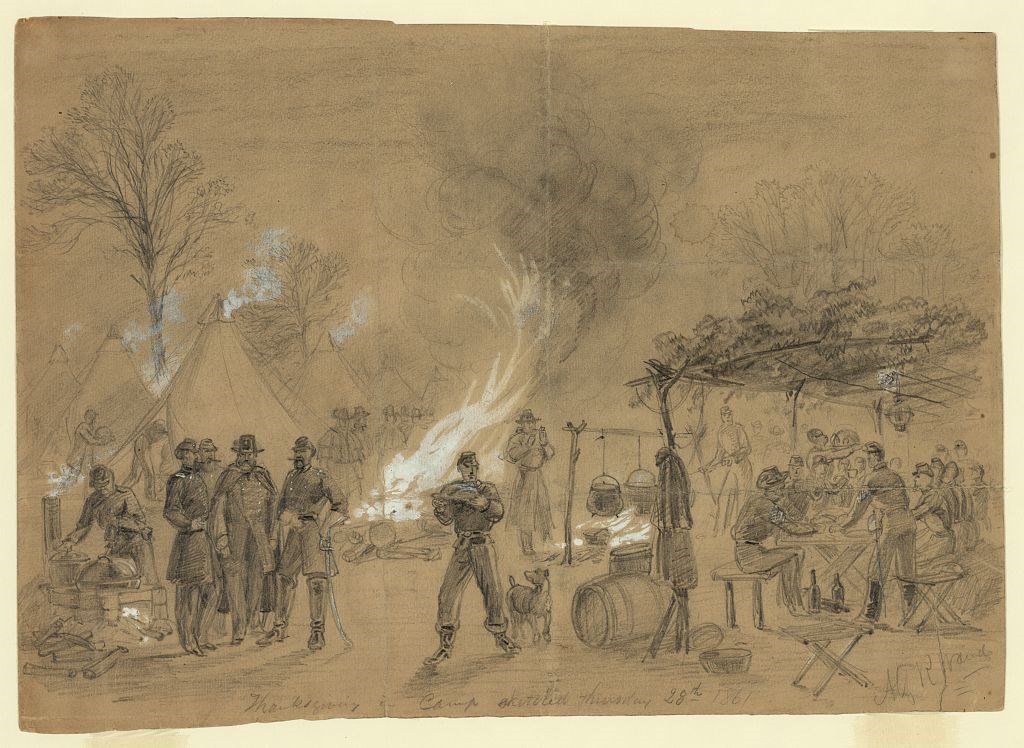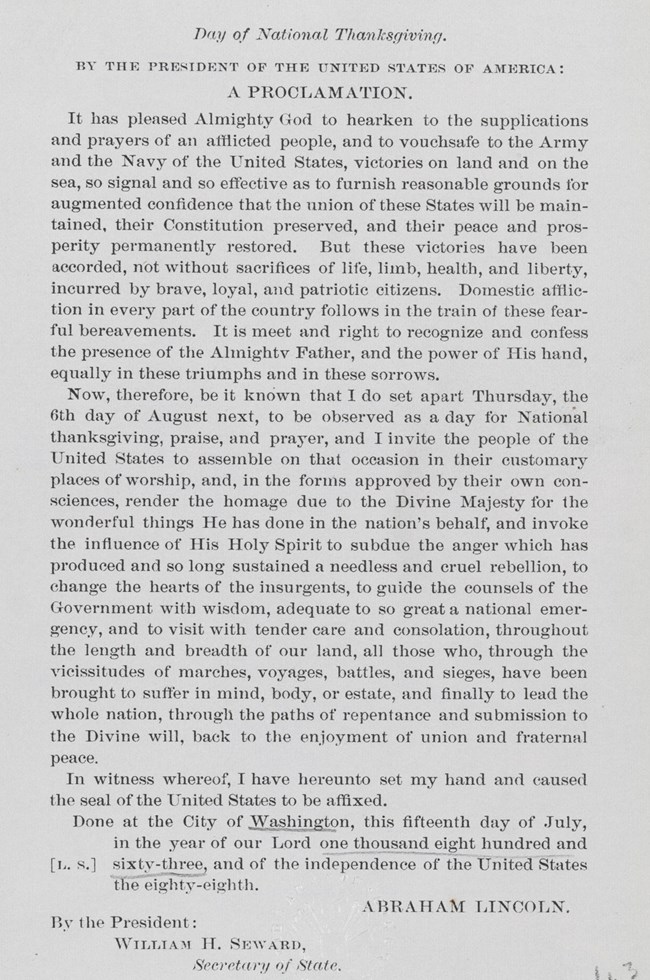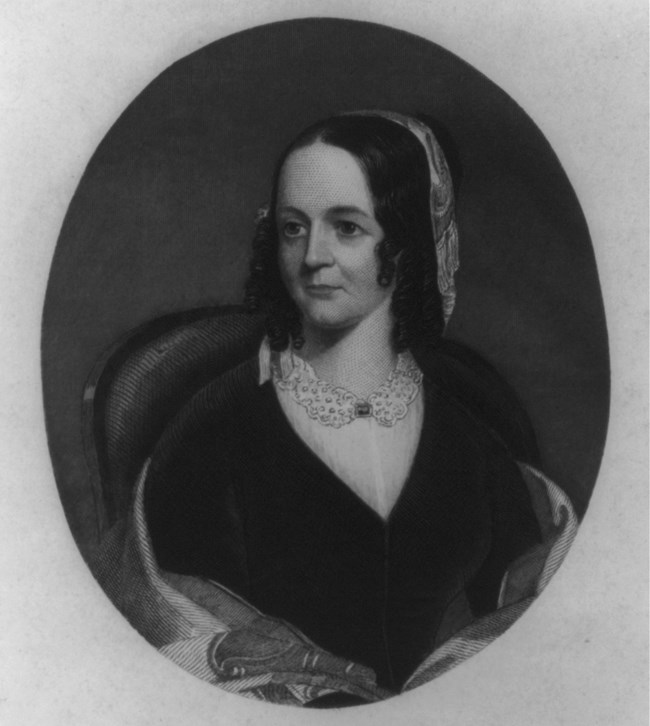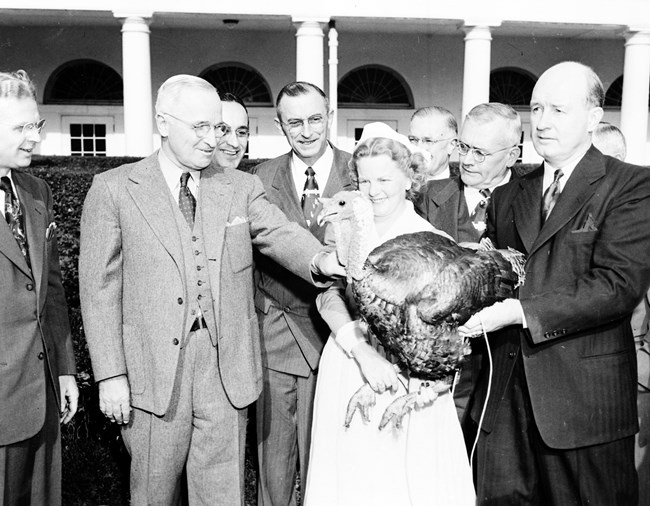
Library of Congress It is late November. A few stubborn leaves still cling to their branches. We gather with our families around the dining room table. The turkey is carved, the cranberry sauce and sweet potatoes are passed around, the smell of pumpkin pie fills the air. There are parades and football games on the television. We gather and give thanks for all we have, with family and friends. How did we reach this Thanksgiving Day tradition? How did we get from traditional harvest celebrations to eating turkey and watching football? Is Mr. Lincoln responsible? 
Library of Congress Abraham Lincoln's Thanksgiving ProclamationIn July 1863, the Battle of Gettysburg resulted in more than 50,000 American casualties. Despite these losses, the United States gained a great victory during these three days. On October 3, 1863, with this victory in mind, as well as its cost, President Lincoln issued a proclamation: I do therefore invite my fellow citizens in every part of the United States, …to set apart and observe the last Thursday of November next, as a day of Thanksgiving... And I recommend to them that while offering up the ascriptions justly due to Him …, they do also, with humble penitence for our national perverseness and disobedience, commend to his tender care all those who have become widows, orphans, mourners or sufferers in the lamentable civil strife in which we are unavoidably engaged, and fervently implore the interposition of the Almighty Hand to heal the wounds of the nation and to restore it as soon as may be consistent with Divine purposes to the full enjoyment of peace, harmony, tranquility and Union. 
Library of Congress Sarah Josepha HalePresident Lincoln's proclamation may have never been issued had it not been for Sarah Josepha Hale. Mrs. Hale is known for her work as editor of Godey's Lady's Book, and as the author of Mary Had a Little Lamb. Mrs. Hale also played a very large role in making Thanksgiving Day, a annual national holiday. In 1827, as editor of Boston's Ladies' Magazine, she began to write essays calling for the national holiday. In 1846, now as the editor of Godey's Lady's Book, Mrs. Hale launched a letter-writing campaign to support her cause. Finally on September 28, 1863, she wrote directly to President Lincoln, asking him to use his powers to create the holiday. Her 36-year quest was finally fulfilled. Thanksgiving TraditionMost elementary level students are familiar with the story of the "First Thanksgiving." They learn that the Pilgrims landed at Plymouth Rock in 1620. To celebrate their first harvest they held a feast; inviting the Wampanoag Indians, who had helped them adapt and survive, to join them. The Pilgrim's Thanksgiving in 1621 was really just a continuation of a tradition they had experienced in Europe. In most agricultural societies it has been common throughout history to hold feasts and ceremonies during the time of the harvest. The "First Thanksgiving," in the Americas may have actually taken place between Francisco Vásquez de Coronado and the Teya Indians at Palo Duro Canyon, Texas on May 23, 1541. Father AbrahamIt can be said that his life embodied the “American Dream.” His story has been told countless times, through books, movies, still images, and the spoken word. With all the attention given to Mr. Lincoln’s life, it sometimes becomes hard to distinguish fact from fiction. 
National Archives Thanksgiving Timeline1541: Francisco Vásquez de Coronado and the Teya Indians hold a feast in Palo Duro Canyon (Texas). BibliographyAppelbaum, Diana Karter. Thanksgiving: an American holiday, an American history. New York: Facts On File, 1984.“The Collected Works of Abraham Lincoln.” http://www.quod.lib.umich.edu/l/lincoln (accessed August 18, 2008). Fryatt, Norma R. Sarah Josepha Hale: the life and times of a nineteenth-century career woman. New York: Hawthorn Books, 1975. Neely, Mark E., Jr. The Abraham Lincoln Encyclopedia. New York: Da Capo Press, Inc., 1982. “Thanksgiving at the White House.” http://www. whitehouse.gov/holiday/thanksgiving/2003 (accessed August 18, 2008). |
Last updated: November 27, 2024
